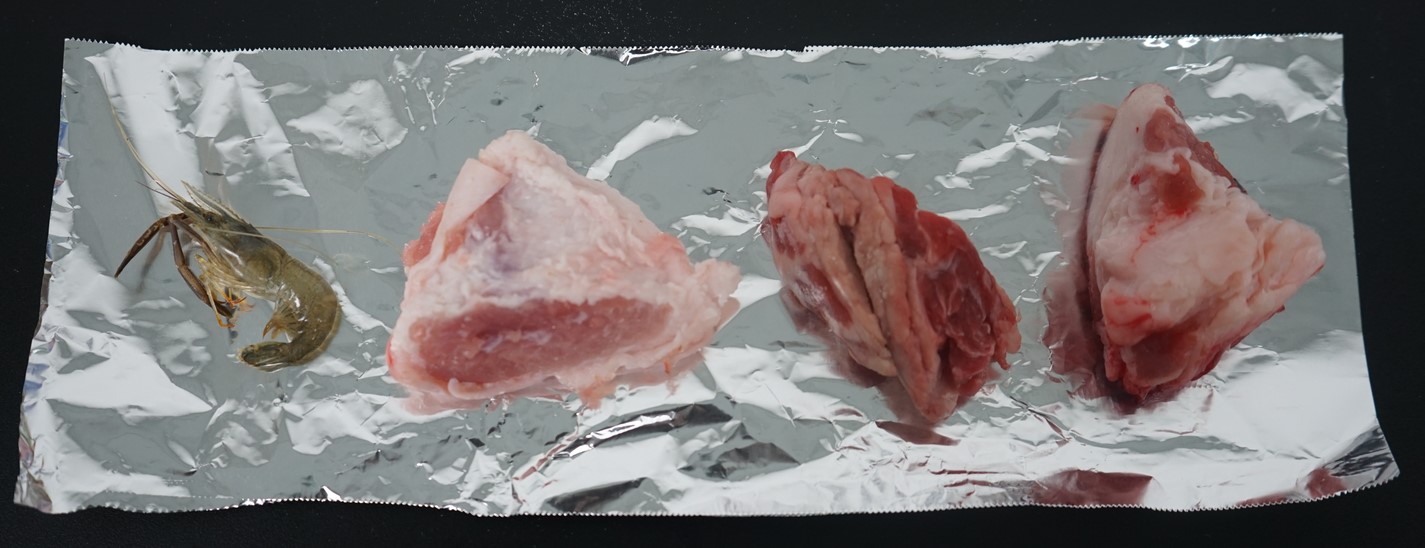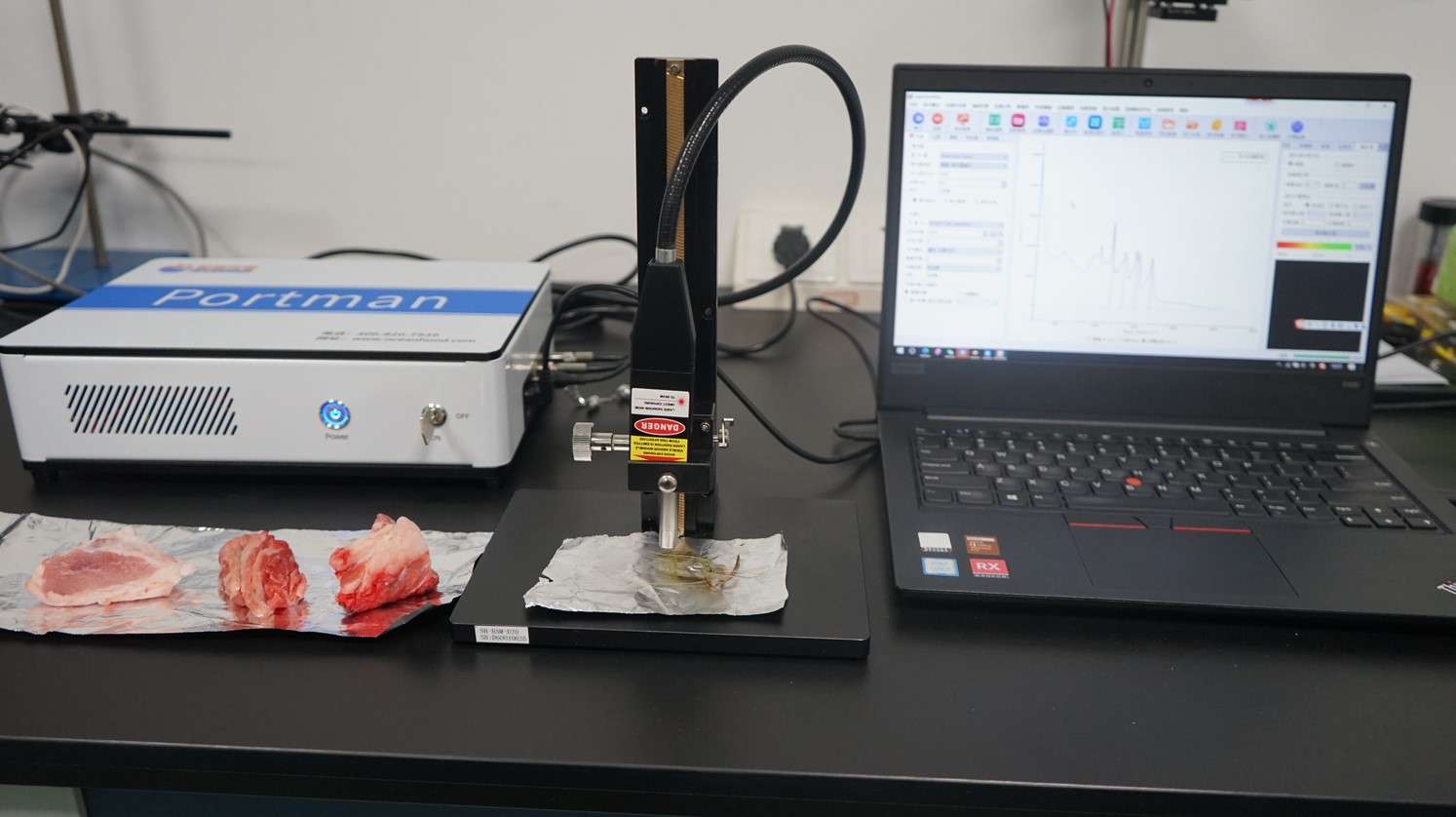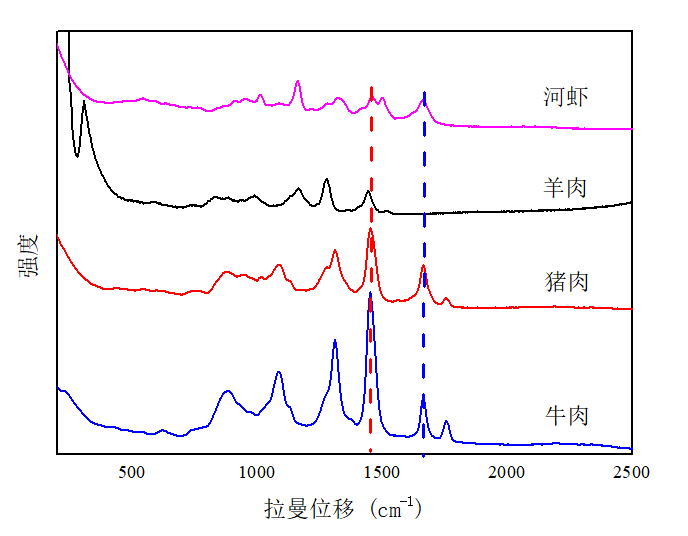|
簡體中文|
English| Launch:2022-07-04 |
The Raman effect is an inelastic scattering phenomenon of photons, that is, the energy exchange between photons and molecular vibrations is scattered out, and the frequency changes. Raman spectroscopy is quick and easy to use, with high specificity, while eliminating the need for complex pre-processing of samples, especially in the area of food quality. Lipid oxidation helps form hydrocarbons, aldehydes and ketones. These oxidation products contribute to odor, rancidity, color deterioration and protein oxidation, ultimately leading to deterioration in meat quality.
Proteins are complex macromolecules that occur naturally and consist of amino acid residues. It has important nutritional value and is directly involved in the chemical processes necessary for life activities. Protein oxidation of meat can lead to reduced water retention, decreased nutritional value (loss of essential amino acids), decreased bioavailability, and deterioration of color and flavor. Raman spectroscopy is an effective tool for monitoring changes in protein conformation. It provides information about the structure of the peptide backbone, the microenvironment of certain side chain amino acids such as tyrosine, tryptophan, and hydrophobic groups, and the local conformation of disulfide bonds and methionine residues.
Pork, beef, lamb and river prawns were purchased from Eighteen Pu and raman analysis was performed using Portman 1064.

Fig.1 Experimental sample diagram

Fig.2 Raman spectroscopy acquisition

Fig.3 Sample Raman spectra
It can be seen from Fig.3 that the types of meat are different, and the characteristic peaks and peaks of the Raman spectrum are also different. At present, consumers' evaluation of meat quality mainly depends on observing the color and marbling of meat and sensory evaluation, but it is difficult to evaluate the tenderness, chewiness and juiciness of meat. The Beattie study found that the 1460-1483 cm-1 (-CH2 and -CH3 bending vibration) regional bands can reflect the juiciness of meat quality, indicating that the hydrophobic interaction between aliphatic amino acid residues is an important factor affecting the juiciness index in the evaluation of meat quality. According to the fingerprint characteristics of raman spectroscopy, the purpose of quickly identifying the type of meat can also be realized. Adulteration of meat products on the market occurs from time to time, and scientific methods are needed to identify. Boyaci uses Raman spectroscopy combined with PCA analysis to quickly identify 132 meat varieties of nonfat meat samples and their sausage products with short detection time and high detection accuracy. Raman spectroscopy technology is developing rapidly in the field of meat quality evaluation with its fast, lossless and high precision characteristics.
Raman spectroscopy monitors changes in molecular vibration information during protein/lipid oxidation. The complete Raman profile of the sample is shown in Fig.3. The spectrum consists mainly of Raman peaks of proteins and fats. Typically, when the secondary structure of the protein changes, the amide I region, including α-helix (near 1655 cm–1), β-fold (near 1670 cm–1), β-corner (near 1685 cm–1), and irregular curl (near 1665 cm–1), is very sensitive. In addition, changes in intensity at the 940 cm–1 Raman band, which is contributed by the coupling of the α-helix backbone ν (C–C) and α-helixin side chains, is also considered to reflect changes in the structural content of the α-helix.
Typical molecular vibrations of fats mainly include 1080 cm–1 (aliphatic telescopic vibration ν (C–C)), 1302 cm–1 (intra-surface methylene bending vibration β (CH2)), 1442 cm–1 (methylene shear vibration δ (CH2)), 1655 cm–1 (carbon-carbon double bond telescopic vibration ν (C =C)), 1745 cm–1 (ester bond telescopic vibration ν (C =O)). Changes in raman intensity ratio for I1655/I1442 are the main monitoring indicators of lipid unsaturation. Chen Qingmin's study found that lipid desaturation was significantly correlated with the Raman peak intensity ratio.
The PR1064 is a portable raman spectrometer with high sensitivity and high signal-to-noise ratio refrigeration. Its internal use of InGaAs array detector, dispersive optical design, improve the sensitivity of the detector. This gives the instrument the ability to capture weak Raman signals.
Compared with 785nm and 532nm Raman spectrometers, 1064nm is less destructive to biological samples such as tissues, avoiding the fluorescence emission area of many substances such as glass and biological tissues. For many of the substances under test, it has the advantage of low fluorescence background. Compared with 532nm and 785nm in the visible segment, 1064nm has better penetration, and can penetrate brown glass bottles, white plastic packaging and packaging materials such as paper.
High sensitivity and signal-to-noise ratio, 1S for many substances can obtain a high-quality signal with a signal-to-noise ratio of more than 300:1;
Wide integration time: The integration time can be set from 1mS to 60S;
High stability: peak fluctuation RMS<1% @2hrs;
Good penetration: can penetrate brown glass, white plastic, wrapping paper;
High resolution: The optimized optical path design and 512pixels can provide a resolution of 15-18cm-1 compared to similar products.
Built-in operating system, spectrum acquisition software, and analysis software.
陳清敏. 反復(fù)凍融牛肉品質(zhì)變化評(píng)價(jià)技術(shù)的適用性研究[D].江南大學(xué),2020.DOI:10.27169/d.cnki.gwqgu.2020.001044.
蔣伊帆. 復(fù)雜食品基質(zhì)中脂肪酸和蛋白質(zhì)結(jié)構(gòu)變化的拉曼光譜研究[D].合肥工業(yè)大學(xué),2021.DOI:10.27101/d.cnki.ghfgu.2021.000689.
Beattie J R, Bell S E J, Borggaard C, et al. Preliminary investigations on the effects of ageing and cooking on the Raman spectra of porcine longissimus dorsi[J]. Meat Sci, 2008, 80(4): 1205-1211.
Boyaci ì H, Uysal R S, Temiz T, et al. A rapid method for determination of the origin of meat and meat products based on the extracted fat spectra by using of Raman spectroscopy and chemometric method[J]. European Food Resh Technol, 2014, 238(5): 845-852.

